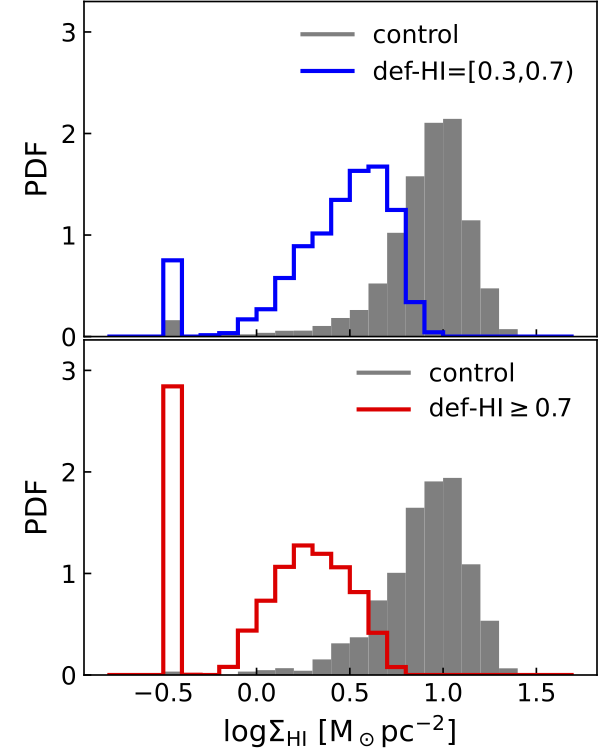Cold gas removal in Virgo cluster galaxies
For the formation of new stars to stop within a galaxy, it must consume or lose its reservoir of cold gas. In the harsh environments of galaxy clusters, gas is stripped easily from the outskirts of the galaxies that inhabit them. However, how this stripping process impacts the central regions of galaxies where gas is more gravitationally bound remains an open question. As most new stars are formed in these central regions, we need to study the cold, dense gas in their centres to properly understand the evolution of star formation in galaxy clusters.
Using sensitive, high-resolution observations of galaxies in the nearby Virgo cluster, we studied the evolution of the cold atomic and molecular gas in their central regions. Our main results are shown below. On the left, we compare the density of atomic gas in 1.3-kiloparsec square regions of Virgo cluster galaxies (red and blue lines) to a control sample of galaxies in isolation (grey shaded lines). We make the same comparison on the right but for the denser molecular gas.
Galaxies that have entered the Virgo cluster more recently (blue lines) have reduced atomic gas content, shown by the blue line shifting to the left of the grey one. However, their molecular gas is barely affected.
Galaxies that have lived in the cluster much longer (red lines) have had more time to be affected by the cluster environmental processes. The red line is shifted to the right of the grey line in both cases, showing that environmental processes are, in fact, reducing atomic and molecular gas content.

